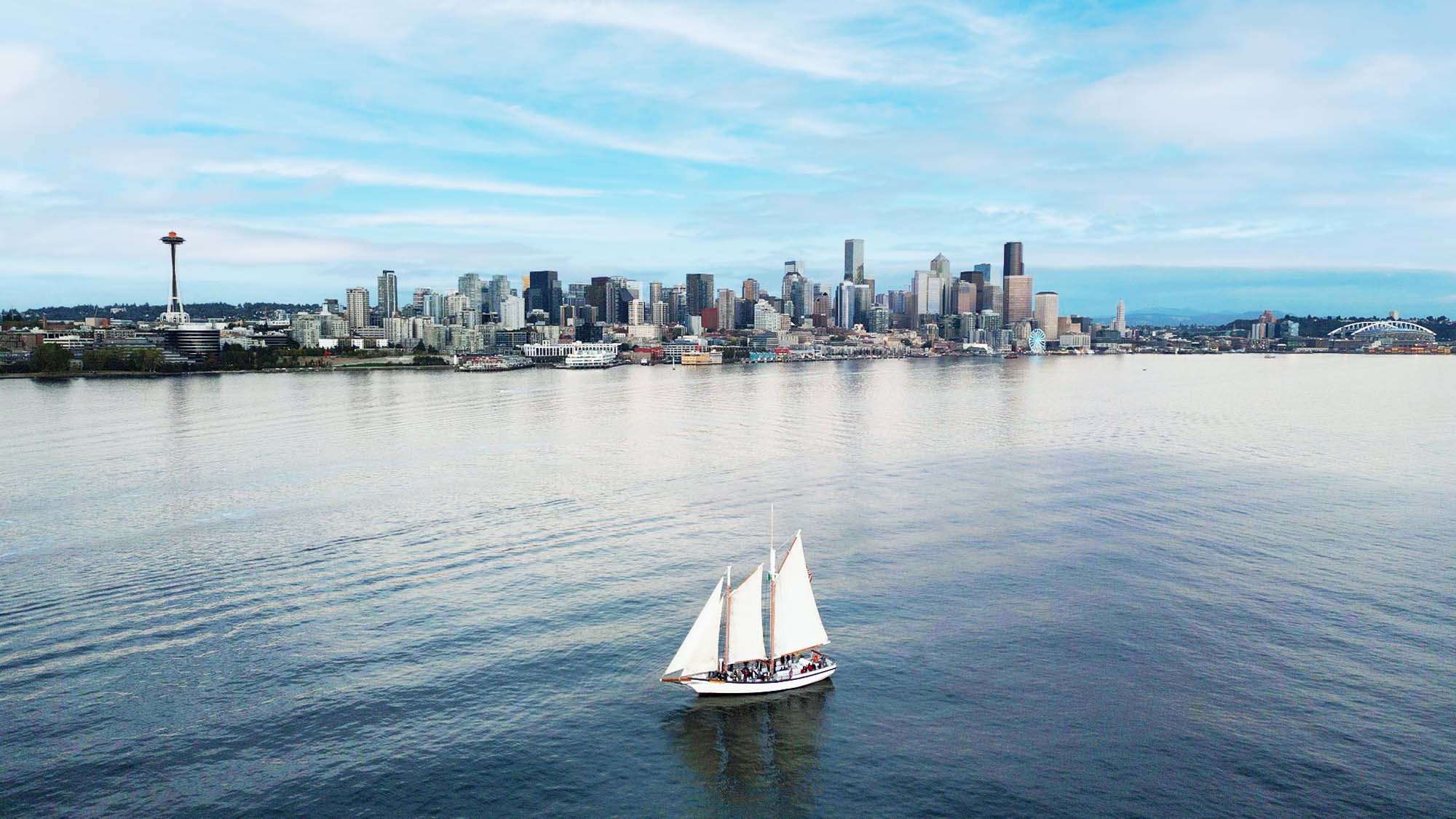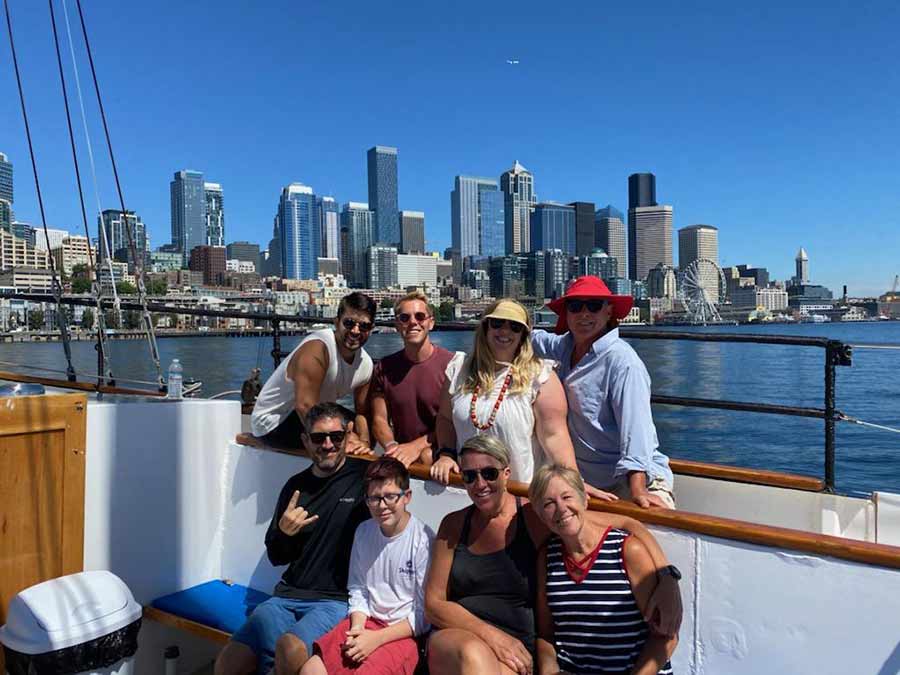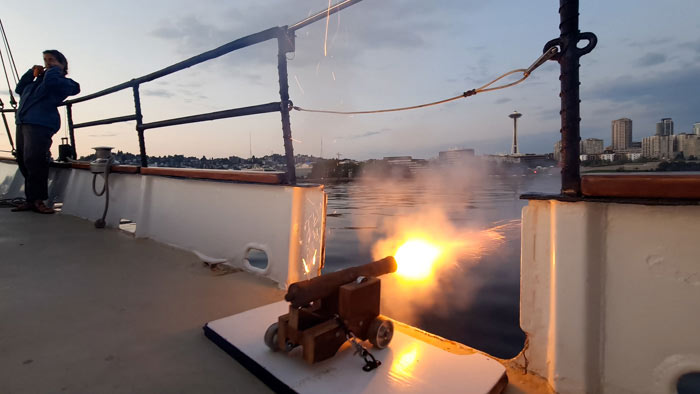
Exploring Seattle’s Marine Wildlife: A Boat Tour Adventure
Seattle is not only known for its iconic skyline and vibrant urban culture but also for the incredible diversity of marine wildlife that thrives in its surrounding waters. Situated on Puget Sound, the city offers an ideal vantage point for witnessing a rich variety of sea life and birds, particularly from the comfort of a boat. From playful orcas to majestic bald eagles soaring above the water, Seattle’s marine wildlife can offer unforgettable experiences for nature lovers.

1. Orcas (Killer Whales)
One of the most iconic and sought-after marine species in Seattle is the orca, also known as the killer whale. These intelligent and highly social animals can often be seen gliding through the waters of Puget Sound. Seattle is fortunate to be near two types of orca populations: resident and transient orcas.
The Southern Resident Killer Whales are a unique population found year-round in the region, especially during the summer months. These orcas primarily feed on salmon and are known for their close-knit family groups. On the other hand, transient orcas—which can be more elusive—feed on seals and other marine mammals.
5 Pretty Cool Facts:
- Orcas are the largest member of the dolphin family and are apex predators.
- They have complex social structures, often living in pods led by a matriarch.
- Different populations have specialized diets, with some feeding on fish and others on marine mammals like seals.
- Orcas use echolocation to communicate and hunt, emitting clicks that bounce off objects to determine their location.
- They are highly intelligent and are known to work together to capture prey, sometimes using coordinated hunting techniques.
Spotting an orca on a boat tour is often the highlight for many visitors, and their presence is a symbol of the region’s commitment to conservation efforts.
2. Humpback Whales
While orcas may steal the show, humpback whales are equally awe-inspiring. These gentle giants are known for their acrobatic breaching behavior, where they leap out of the water in spectacular displays. Humpback whales migrate through the waters around Seattle, especially during the spring and fall.
5 Cool Facts:
- Humpback whales are known for their long pectoral fins, which can be up to one-third of their body length.
- They perform spectacular breaches, leaping out of the water and making a big splash.
- Males produce complex songs that can last for hours, likely used for mating purposes.
- Humpbacks are known for “bubble net feeding,” a group hunting technique where they create a circle of bubbles to trap fish.
- They migrate vast distances, traveling up to 16,000 miles annually between feeding and breeding grounds.
Their massive size, combined with their grace and power, makes humpbacks a favorite among whale watchers. Often, you’ll spot them as they feed on krill and small fish, lunging through the water in coordinated movements.


3. Gray Whales
Gray whales are another fascinating species that can be spotted during their annual migration along the Pacific Coast. Every spring, gray whales pass by Seattle on their journey to feeding grounds in the Arctic. These whales often come close to shore and are known to surface frequently, making them easier to spot from a boat.
5 Facts You Didn’t Know:
- Gray whales undertake one of the longest migrations of any mammal, traveling around 10,000-14,000 miles round trip from the Arctic to Mexico.
- They are bottom feeders, often filtering tiny organisms from sediment by turning on their sides and scooping up mud.
- Gray whales were once nearly hunted to extinction but have made a significant recovery due to conservation efforts.
- They are known for their curious nature and often approach boats, making them popular among whale watchers.
- Gray whales are baleen whales, meaning they use baleen plates to filter food from the water.
Gray whales have an interesting feeding strategy—they scrape the ocean floor for tiny organisms, which they filter through their baleen. Watching a gray whale rise slowly from the depths is a surreal and humbling experience.
4. Harbor Seals
Seattle’s waters are home to harbor seals, which can be seen year-round. These curious and playful creatures are often seen bobbing in the water or resting on rocky outcroppings. They are highly adaptable and thrive in both urban and remote environments around Puget Sound.
5 Things You Didn’t Know About Harbor Seals:
- Harbor seals are true seals, meaning they lack external ear flaps and have smaller flippers compared to sea lions.
- They can dive up to 1,500 feet and remain submerged for up to 30 minutes.
- Harbor seals give birth to pups on land or ice, and the pups are able to swim within hours of birth.
- They are solitary by nature but often haul out in groups on beaches or rocky shores.
- Their diet consists of fish, squid, and crustaceans, which they catch using their sensitive whiskers to detect prey.
Boat passengers often delight in watching harbor seals pop their heads above water, curiously checking out passing vessels. Their playful behavior, combined with their wide-eyed expression, makes them a favorite among wildlife enthusiasts.


5. Sea Lions
Two types of sea lions can be seen around Seattle—Steller sea lions and California sea lions. Both species are frequently spotted lounging on docks, buoys, or rocks. The Steller sea lion is the larger of the two and is classified as an endangered species. However, their populations have been steadily recovering, and lucky visitors may spot these massive animals basking in the sun.
California sea lions, on the other hand, are more abundant and are known for their distinctive barking calls. Watching them interact, squabble, and rest in groups is a charming sight, especially for those on a boat tour close to shore.
5 Facts about Sea Lions:
- Unlike seals, sea lions have external ear flaps and can rotate their rear flippers to walk on land.
- They are highly social and often form large groups called colonies when they come ashore to rest or breed.
- Sea lions are excellent swimmers, capable of reaching speeds of up to 25 miles per hour.
- They use vocalizations, such as barks, to communicate with each other, especially during breeding season.
- Their diet consists mainly of fish and squid, and they are known to be agile hunters, often working together to herd prey.
6. Dall’s Porpoises
For those who love speed, Dall’s porpoises are a treat to watch. These small, black-and-white porpoises are incredibly fast swimmers and are often seen darting in and out of the water near boats. Dall’s porpoises are playful creatures and sometimes ride the bow waves of boats, giving passengers an up-close view of their acrobatic movements.
Fact about Dall’s Porpoises:
- Dall’s porpoises are one of the fastest marine mammals, capable of swimming at speeds of up to 55 km/h (34 mph).
- They have striking black-and-white coloring, often mistaken for orcas at a distance.
- Dall’s porpoises are known to enjoy riding the bow waves of boats and are frequently seen near the surface.
- They primarily feed on fish and squid, using echolocation to find their prey in the dark depths.
- They typically travel in small groups but can sometimes be found in larger pods.
Their resemblance to orcas often causes confusion, but Dall’s porpoises are much smaller and are known for their energetic behavior rather than the more stately glide of the killer whale.


7. Harbor Porpoises
While harbor porpoises are more elusive and shy than their Dall’s counterparts, they are still a joy to spot on a quiet boat ride. These small marine mammals are generally seen alone or in small groups and tend to avoid boats. However, when spotted, their quick movements and occasional surfacing provide a fleeting but thrilling glimpse into their underwater world.
Facts About Harbor Porpoises:
- They are generally solitary or found in small groups of two to five individuals.
- Harbor porpoises are one of the smallest marine mammals, growing to about 5-6 feet in length.
- They are shy and tend to avoid boats, making them more difficult to spot than other porpoises.
- They have a high metabolism and need to eat frequently, often feeding on small fish like herring and sardines.
- Harbor porpoises live in cold coastal waters and can be found in both the Atlantic and Pacific Oceans.
8. Bald Eagles
Beyond marine mammals, Seattle’s waters are also a haven for birdwatchers. Bald eagles are one of the most majestic birds that can be spotted soaring above Puget Sound. These powerful raptors hunt fish from the sea and are often seen perched high in trees near the water or flying above looking for their next meal.
5 Amazing Facts About Bald Eagles:
- Bald eagles are the national bird and symbol of the United States, known for their white head and tail feathers.
- They have impressive eyesight, capable of spotting prey from several hundred feet in the air.
- Bald eagles primarily feed on fish but will also hunt birds and small mammals or scavenge for carrion.
- They build large nests, called eyries, which can be reused and added to for many years, becoming huge over time.
- Bald eagles mate for life and engage in dramatic courtship displays, including locking talons and free-falling through the air.
Watching a bald eagle dive into the water to catch a fish is an incredible display of their hunting prowess, and spotting them during a boat tour adds another layer of wonder to the wildlife experience.


9. Great Blue Herons
The great blue heron is another bird species commonly seen around Seattle’s waterways. These large, long-legged birds are known for their slow, deliberate movements as they wade through shallow waters in search of fish. Great blue herons often stand still for long periods, creating a serene and picturesque scene for boaters as they pass by.
Facts about Great Blue Herons:
- Great blue herons are the largest herons in North America, standing over 4 feet tall with a wingspan of up to 6 feet.
- They are patient hunters, often standing still for long periods before striking at fish or other prey in shallow water.
- They nest in colonies called heronries, often in tall trees near water.
- Great blue herons are highly adaptable and can be found in a variety of wetland habitats across North America.
- Their diet consists mainly of fish, but they also eat amphibians, insects, and small mammals.
Their graceful flight and distinctive silhouette make them easy to spot, and their presence in the Pacific Northwest has made them a local symbol of tranquility and resilience.
10. Tufted Puffins
For bird enthusiasts, a sighting of the tufted puffin can be a real treat. These seabirds, known for their colorful beaks and comical appearance, can be spotted near the rocky islands off Seattle’s coast during their breeding season. Although tufted puffins are more elusive, patient boaters who venture into the right areas may catch a glimpse of these endearing creatures.
5 Things You Didn’t Know About Puffins:
- Tufted puffins are mostly found in the North Pacific, with large populations in Alaska and parts of Russia.
- Tufted puffins are seabirds known for their colorful beaks and distinctive yellow tufts during the breeding season.
- They are excellent swimmers, using their wings to “fly” underwater in pursuit of fish.
- Puffins nest in burrows on cliffs or islands, laying a single egg that both parents incubate.
- They can hold several fish in their beaks at once, using specialized spines on their tongues and mouths to catch and carry multiple fish back to their chicks.

A Marine Paradise Awaits
Seattle’s waters are a true marine paradise, filled with incredible wildlife encounters. Whether you’re gazing at the iconic orca, watching a humpback whale breach, or admiring the playful antics of seals and porpoises, the wildlife around Seattle offers endless opportunities for discovery. Boat tours around the region provide the perfect way to experience these animals in their natural habitat, all while taking in the breathtaking beauty of Puget Sound and the surrounding landscape.
For those planning a trip to Seattle, make sure to include a wildlife boat tour by Seattle’s Tall Ship on your itinerary. It’s an adventure that not only connects you with nature but also offers a unique perspective on the marine ecosystem that thrives in the waters of the Pacific Northwest.




Guests enjoy the sights and sounds of a tall ship tour onboard Seattle’s Tall Ships, “The Bay Lady”.
Book a sail with Seattle’s Tall Ship
If you have never experienced the thrill of sailing on our tall ship, there is no better time to try than now. With multiple sailing times and experiences available, our family-friendly harbor experiences are a must-do Seattle activity. Join us today!
